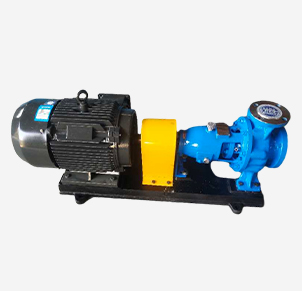Vietnamese
- Afrikaans
- Albanian
- Amharic
- Arabic
- Armenian
- Azerbaijani
- Basque
- Belarusian
- Bengali
- Bosnian
- Bulgarian
- Catalan
- Cebuano
- Corsican
- Croatian
- Czech
- Danish
- Dutch
- English
- Esperanto
- Estonian
- Finnish
- French
- Frisian
- Galician
- Georgian
- German
- Greek
- Gujarati
- Haitian Creole
- hausa
- hawaiian
- Hebrew
- Hindi
- Miao
- Hungarian
- Icelandic
- igbo
- Indonesian
- irish
- Italian
- Japanese
- Javanese
- Kannada
- kazakh
- Khmer
- Rwandese
- Korean
- Kurdish
- Kyrgyz
- Lao
- Latin
- Latvian
- Lithuanian
- Luxembourgish
- Macedonian
- Malgashi
- Malay
- Malayalam
- Maltese
- Maori
- Marathi
- Mongolian
- Myanmar
- Nepali
- Norwegian
- Norwegian
- Occitan
- Pashto
- Persian
- Polish
- Portuguese
- Punjabi
- Romanian
- Russian
- Samoan
- Scottish Gaelic
- Serbian
- Sesotho
- Shona
- Sindhi
- Sinhala
- Slovak
- Slovenian
- Somali
- Spanish
- Sundanese
- Swahili
- Swedish
- Tagalog
- Tajik
- Tamil
- Tatar
- Telugu
- Thai
- Turkish
- Turkmen
- Ukrainian
- Urdu
- Uighur
- Uzbek
- Vietnamese
- Welsh
- Bantu
- Yiddish
- Yoruba
- Zulu
Telephone: +86 13120555503
Email: frank@cypump.com
Th12 . 28, 2024 01:15 Back to list
pump slurry
Understanding Pump Slurry Key Concepts and Applications
Pumping slurry is a crucial process in various industries, particularly in mining, construction, and waste management. A slurry is a mixture of solids and liquids, typically containing particles suspended in a fluid, most commonly water. The efficiency of transporting slurry materials is heavily dependent on the pump technology used, and understanding this process is vital for optimizing performance and reducing operational costs.
What is Slurry?
Slurry is defined as a fluid that consists of a mixture of liquid and solid particles. Common examples include concrete (a mixture of cement, water, and aggregates), ore slurries in mining operations, and wastewater containing solid waste materials. The consistency and properties of slurries can vary significantly based on the type of solid materials, their concentration, and the liquid used. These properties influence how slurries behave when pumped, including their viscosity, density, and flow characteristics.
Pumping Slurry Challenges and Considerations
Pumping slurry presents unique challenges that differ from pumping clean fluids. The presence of solid particles can lead to issues such as abrasion, sedimentation, and clogging within pump systems. Furthermore, the viscosity and density of the slurry can vary during operation, impacting the energy efficiency and flow rate of the pumping process.
Selecting the right type of pump for slurry transport is critical. There are several types of pumps suitable for slurry applications, including centrifugal pumps, diaphragm pumps, and positive displacement pumps. Each type has its own advantages and limitations based on the nature of the slurry being handled. For example, centrifugal pumps can efficiently move highly fluid slurries, while positive displacement pumps provide more consistent flow rates at higher viscosities.
pump slurry

The Importance of Pump Design
The design of slurry pumps is tailored to minimize wear and tear caused by abrasive solids. Materials such as hardened steel, rubber, and ceramic coatings are often used to construct pump components, enhancing their durability. Additionally, the pump's impeller and housing design are engineered to optimize the flow of slurry while minimizing the risk of clogging.
A well-designed slurry pump system incorporates not only the pump itself but also the entire piping network, valves, and fittings. Proper system design is essential to maintain consistent flow and minimize pressure losses, thus improving overall efficiency. Engineers must consider factors such as pipe diameter, length, and layout to ensure optimal flow dynamics.
Applications of Slurry Pumps
Slurry pumps are used in a wide range of applications. In the mining industry, they are essential for transporting the mined ore mixed with water, facilitating the separation of valuable minerals from waste materials. In construction, slurry pumps are used for concrete transportation and removal of excavated materials mixed with water. Waste management facilities also rely on slurry pumps to handle sludge and other waste materials.
Conclusion
In conclusion, the understanding of pump slurry systems is essential for industries where the transport of solid-liquid mixtures is necessary. The selection of appropriate pump types and designs can significantly influence operational efficiency and cost-effectiveness. As technology advances and industries evolve, improvements in slurry pump design and materials will continue to enhance performance, addressing the challenges associated with pumping slurries. Whether in mining, construction, or waste management, mastering the principles of slurry pumping is key to achieving successful outcomes.
-
Reliable Non-Clog Sewage Pumps with GPT-4-Turbo Tech
NewsAug.04,2025
-
High-Performance Air Pumps for Sand & Gravel | Efficient Transport
NewsAug.03,2025
-
ISG Series Vertical Pipeline Pump - Chi Yuan Pumps Co., LTD.|Energy Efficiency, Corrosion Resistance
NewsAug.03,2025
-
ISG Series Pipeline Pump - Chi Yuan Pumps | Energy Efficiency&Compact Design
NewsAug.03,2025
-
ISG Series Vertical Pipeline Pump - Chi Yuan Pumps Co., LTD.|High Efficiency, Low Noise, Durable
NewsAug.02,2025
-
ISG Series Vertical Pipeline Pump - Chi Yuan Pumps | High Efficiency, Low Noise
NewsAug.02,2025










